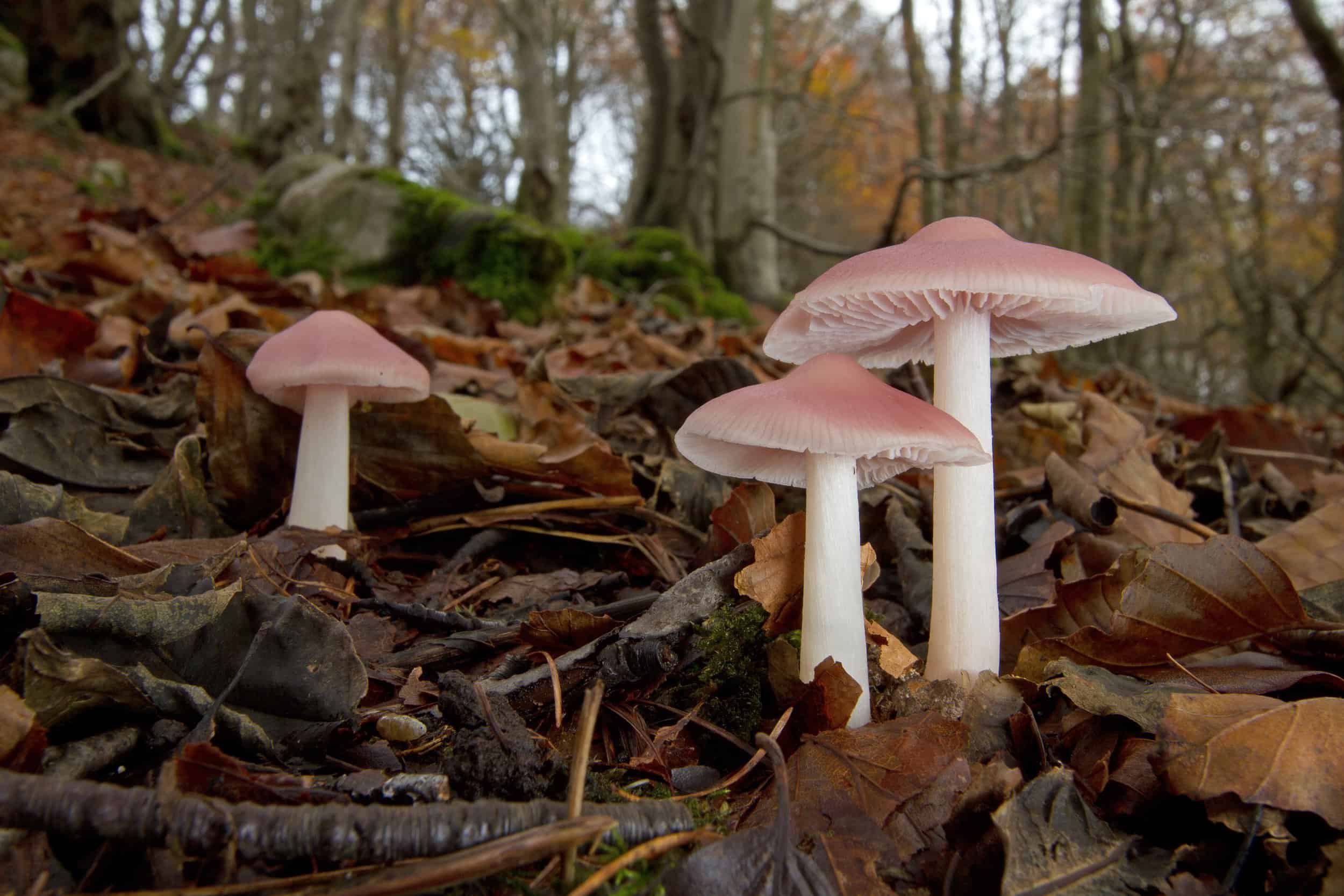Steve Docker and Rebecca Farley-Brown work for Field Studies Council Publications. Here Steve provides an overview of a package of fungi resources that they have been working on with mycologist Geoffrey Kibby – especially a brace of WildID fold out guides to Distinctive Fungi.
Fungi are an ancient form of life, diverse and mysterious. You never quite know when and where they will show themselves. Most are found in the autumn and good places to look include woodland edges and clearings, parkland, grassland, meadows and lawns, hedgerows and roadside verges. As autumn approaches, I look forward to re-visiting two local Derbyshire sites. Bradley Wood is a precious woodland habitat, Mapleton Pastures a valuable grassland site, both are rich in fungi species.
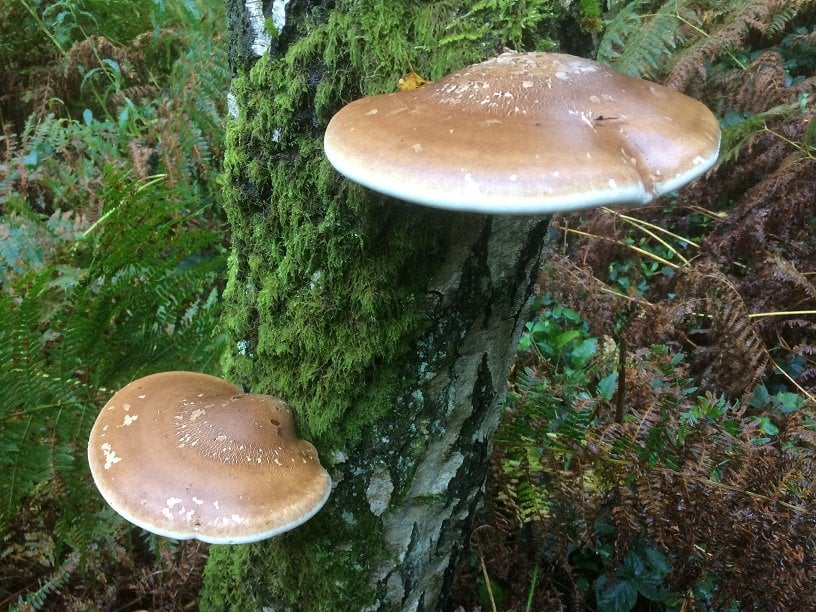
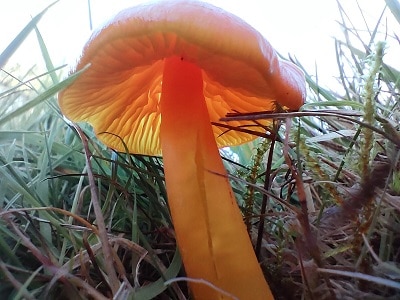
What are fungi?
Fungi are a vital component of ecosystems, helping to break down organic matter and recycle nutrients. They consist of minute hollow tubes called hyphae which develop into a fine, interconnected network termed the mycelium. The organisms grow through a substrate, such as wood, soil or decaying matter, from which they obtain nutrition. When conditions are suitable, they produce fruitbodies (sporophores) which distribute the reproductive structures (spores). Although not always easy to spot the fungal fruitbodies are normally the part of the fungi that we find, and they take many different forms.
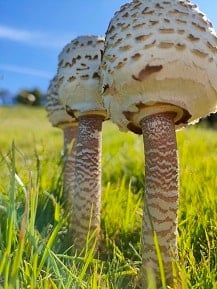
Something for everyone
The problem with learning to identify fungi is that there are so many species, and the task can seem daunting. Moreover, many species do not have a common name and even their scientific names are prone to change from time to time! There are also species that look very similar to each other. So, where to start?
Well, there is good news. There are species that are distinctive and not easily confused with any other species. They can be reliably identified ‘in the field’ without the use of specialist equipment and without the need to collect a specimen. These are the subject of two new WildID guides and my recommendation would be to start with these species. Indeed, I have found at least ten at Bradley Wood and Mapleton Pastures.
Then, if you wish to take your interest in fungi identification further there are plenty of tools and resources that can help with the more challenging species. These may need examination using a hand lens, the application of chemical tests or careful collection and close examination with a microscope. A few may even need to be sent for DNA sequencing!
So, there is something for everyone in the world of fungi.
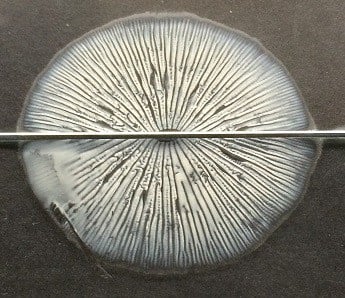
New fungi resources
There are two new WildID fungi guides. The first includes distinctive species of puffball, earthball, tooth fungi, clubs and corals, bracket fungi, jelly fungi and boletes. They disperse their spores in a variety of ways. The second guide includes distinctive species of fungi that disperse their spores from radiating gill-like structures (lamellae) on the underside of a protective cap (pileus). The two guides include a total of eighty species.
They are based upon Mushrooms and Toadstools of Britain & Europe, a four volume series of books published between 2017 and 2023 by Geoffrey Kibby, an experienced mycologist and talented artist.
In addition, there are also digital resources that have been developed in collaboration with Geoffrey Kibby. Identikit and Quizlet provide the user with an opportunity to further develop their skills. Identikit is a digital, multi-access identification key that can be used alongside the WildID guides. Quizlet is an on-line flash card learning resource, perfect for practising identification before heading outdoors. Identikit is available at: eclectic-ecologist.com
Want to learn more?
A good way to learn is to go on a fungi foray, these walks are often organised by Local Fungi Groups. In addition, check out the wide range of courses and take a look at the British Mycological Society website.
To help us all appreciate and enjoy biodiversity and better understand the changing state of nature the Field Studies Council has produced a wide range of high quality identification resources. In particular the WildID fold-out guides and Aids to Identification in Difficult Groups of Animals & Plants (AIDGAP).
The WildID Distinctive Fungi guides (OP213 & OP214) are available from our online shop.
Health and safety: Some fungi species are known to be poisonous/toxic. Always wash your hands after working with fungi and never eat wild fungi unless you are certain that you have identified it correctly. Take extra care when searching for fungi beside roads.

